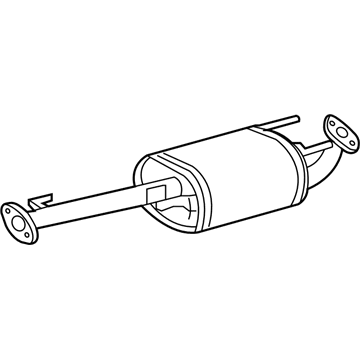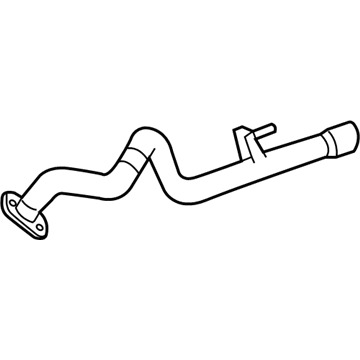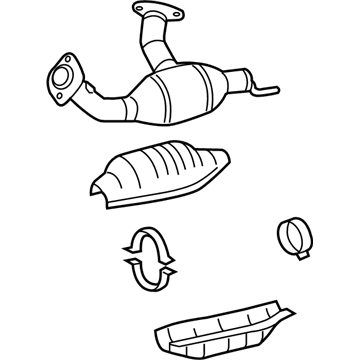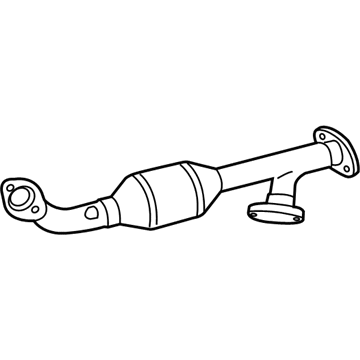×
ToyotaParts- Hello
- Login or Register
- Quick Links
- Live Chat
- Track Order
- Parts Availability
- RMA
- Help Center
- Contact Us
- Shop for
- Toyota Parts
- Scion Parts
My Garage
My Account
Cart
OEM 2008 Toyota FJ Cruiser Exhaust Pipe
Exhaust Tail Pipe- Select Vehicle by Model
- Select Vehicle by VIN
Select Vehicle by Model
orMake
Model
Year
Select Vehicle by VIN
For the most accurate results, select vehicle by your VIN (Vehicle Identification Number).
4 Exhaust Pipes found
2008 Toyota FJ Cruiser Intermediate Pipe, Center
Part Number: 17420-31370$338.65 MSRP: $442.87You Save: $104.22 (24%)Ships in 1-2 Business DaysProduct Specifications- Other Name: Pipe Assembly, Exhaust; Muffler Assembly; Direct-Fit Exhaust; System Kit; Tail Pipe; Muffler & Pipe; Pipe Assembly, Exhaust, Center; Muffler
- Position: Center
- Replaces: 17420-31110
- Part Name Code: 17420
- Item Weight: 1.40 Pounds
- Item Dimensions: 50.9 x 20.2 x 9.3 inches
- Condition: New
- Fitment Type: Direct Replacement
- SKU: 17420-31370
- Warranty: This genuine part is guaranteed by Toyota's factory warranty.
2008 Toyota FJ Cruiser Tail Pipe
Part Number: 17430-30041$207.82 MSRP: $271.78You Save: $63.96 (24%)Ships in 1-2 Business DaysProduct Specifications- Other Name: Pipe Assembly, Exhaust Tail; Exhaust Tail Pipe; Exhaust Pipe; Direct-Fit Exhaust; Exhaust System Kit; Tailpipe; Pipe Assembly, Exhaust, Tail
- Replaces: 17430-30040
- Part Name Code: 17430
- Item Weight: 8.60 Pounds
- Item Dimensions: 45.3 x 12.8 x 9.6 inches
- Condition: New
- Fitment Type: Direct Replacement
- SKU: 17430-30041
- Warranty: This genuine part is guaranteed by Toyota's factory warranty.
2008 Toyota FJ Cruiser Front Pipe, Driver Side
Part Number: 17450-31030$1284.01 MSRP: $1723.52You Save: $439.51 (26%)Ships in 1-3 Business DaysProduct Specifications- Other Name: Pipe Assembly, Exhaust Front; Catalytic Converter, Left, Rear Left; Exhaust Pipe; Converter & Pipe; Pipe Assembly, Exhaust, Front; Catalytic Converter
- Manufacturer Note: *114=TOYOTA/T38/Y
- Position: Front Driver Side
- Part Name Code: 17450B
- Item Weight: 7.30 Pounds
- Item Dimensions: 35.4 x 5.1 x 17.4 inches
- Condition: New
- Fitment Type: Direct Replacement
- SKU: 17450-31030
- Warranty: This genuine part is guaranteed by Toyota's factory warranty.
2008 Toyota FJ Cruiser Front Pipe
Part Number: 17410-31450$1197.53 MSRP: $1607.43You Save: $409.90 (26%)Ships in 1-3 Business DaysProduct Specifications- Other Name: Pipe Assembly, Exhaust; Catalytic Converter, Rear Right, Right; Exhaust Pipe; Converter & Pipe; Pipe Assembly, Exhaust, Front; Catalytic Converter
- Manufacturer Note: *114=TOYOTA/T37/Y
- Position: Front
- Part Name Code: 17410
- Item Weight: 10.00 Pounds
- Item Dimensions: 35.0 x 5.3 x 19.8 inches
- Condition: New
- Fitment Type: Direct Replacement
- SKU: 17410-31450
- Warranty: This genuine part is guaranteed by Toyota's factory warranty.
2008 Toyota FJ Cruiser Exhaust Pipe
Looking for affordable OEM 2008 Toyota FJ Cruiser Exhaust Pipe? Explore our comprehensive catalogue of genuine 2008 Toyota FJ Cruiser Exhaust Pipe. All our parts are covered by the manufacturer's warranty. Plus, our straightforward return policy and speedy delivery service ensure an unparalleled shopping experience. We look forward to your visit!
2008 Toyota FJ Cruiser Exhaust Pipe Parts Q&A
- Q: How to install the exhaust pipe on 2008 Toyota FJ Cruiser?A: Installation of the exhaust pipe begins with a new gasket on the RH exhaust manifold, holding the front exhaust pipe with 2 nuts with a torque of 54 Nm. Do the same with the LH manifold and the No. 2 pipe. Install the center pipe with enough spring length and lastly the tail pipe and oxygen sensor, and ensure it does not leak.












